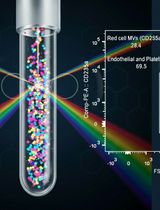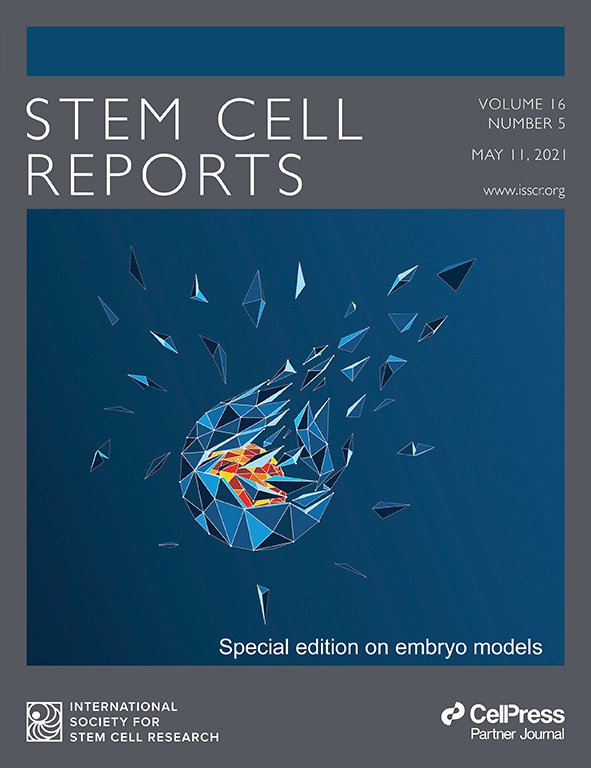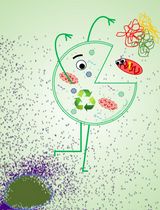- EN - English
- CN - 中文
Flow Cytometry Analysis of Planarian Stem Cells Using DNA and Mitochondrial Dyes
利用DNA和线粒体染料流式细胞术分析涡虫干细胞
(*contributed equally to this work) 发布: 2022年01月20日第12卷第2期 DOI: 10.21769/BioProtoc.4299 浏览次数: 3099
评审: Giusy TornilloPrasad AbnaveAnonymous reviewer(s)

相关实验方案

外周血中细胞外囊泡的分离与分析方法:红细胞、内皮细胞及血小板来源的细胞外囊泡
Bhawani Yasassri Alvitigala [...] Lallindra Viranjan Gooneratne
2025年11月05日 866 阅读
Abstract
Planarians are free-living flatworms that emerged as a crucial model system to understand regeneration and stem cell biology. The ability to purify neoblasts, the adult stem cell population of planaria, through fluorescence-activated cell sorting (FACS) has tremendously increased our understanding of pluripotency, specialization, and heterogeneity. To date, the FACS-based purification methods for neoblasts relied on nuclear dyes that discriminate proliferating cells (>2N), as neoblasts are the only dividing somatic cells. However, this method does not distinguish the functional states within the neoblast population. Our work has shown that among the neoblasts, the pluripotent stem cells (PSCs) are associated with low mitochondrial content and this property could be leveraged for purification of the PSC-enriched population. Using the mitochondrial dye MitoTracker Green (MTG) and the nuclear dye SiR-DNA, we have described a method for isolation of PSCs that are viable and compatible with downstream experiments, such as transplantation and cell culture. In this protocol, we provide a detailed description for sample preparation and FACS gating for neoblast isolation in planaria.
Background
Fluorescent dyes that stain the nucleus in live cells are used for fluorescence-activated cell sorting (FACS) proliferating stem cells from planaria. In a seminal work, Hayashi et al. used Hoechst for staining planarian cells and categorized the cells into three populations, termed as X1, X2, and Xins population (Figure 2) and (Hayashi et al., 2006). This allowed sorting of the proliferating cells (X1 cells) in the planarian field of research (Hayashi et al., 2006). Later, Hoechst stain was found to be toxic so, for downstream applications where viable cells are required, a different FACS gate X1(fs) based on forward scatter (FSC) had to be used (Wagner et al., 2011). This population was obtained by back-gating the X1 population in an FSC vs SSC plot (Wang et al., 2018). However, X1(fs) is heavily contaminated by differentiated cells. Subsequently, the nuclear dye SiR-DNA was proposed as an alternative to Hoechst for obtaining proliferating stem cells with high viability (Lei et al., 2019; Niu et al., 2021). However, this flow cytometry method using a nuclear dye could not distinguish between the pluripotent and the specialized stem cell populations.
Methods that could distinguish pluripotent from specialized stem cells could advance our understanding of planarian stem cell biology and function. Since neoblasts have scant cytoplasm and reduced organelles, we reasoned that organelle complexity could be way to distinguish different cellular states (Higuchi et al., 2007). For this purpose, we used mitochondria, an organelle that plays an important role in metabolism and signaling. Studies in mammalian stem cells have suggested that the mitochondrial state, including the mitochondrial activity, content, morphology, and number varies between different cellular states. We have recently reported the use of MitoTracker Green (MTG) staining in combination with nuclear dyes, such as Hoechst and SiR-DNA, for the purification of pluripotent stem cells (Mohamed Haroon et al., 2021). Our data suggest that the population of proliferating cells with low MTG is enriched in pluripotent cells compared to the high MTG cells, as indicated by higher transplantation efficiency (~65% for MTG Low cells vs ~30% for MTG High cells). Further, this method could be used to enrich the 2N stem cells from the X2 population, which is a mixture of stem cells and mitotic progenitors. To this end, the X2 gate was divided into four populations based on MTG and FSC, which indicates size. We found that the 2N PSCs are enriched in the low MTG and high FSC gate (Mohamed Haroon et al., 2021). In contrast, X2 cells with low MTG and low FSC were predominantly early post-mitotic progenitors. The X2 high MTG cells, regardless of their size, were observed to be late progenitors (Mohamed Haroon et al., 2021). Here, we provide a step-by-step protocol for planarian dissociation, staining, and FACS gating of various MTG populations.
Materials and Reagents
50 mL centrifuge tubes (Tarsons, catalog number: 546021)
15 mL centrifuge tubes (Tarsons, catalog number: 546041)
35 mm culture dish
60 mm culture dish
Falcon 5 mL round bottom FACS tubes (BD, Falcon, catalog number: 352054)
SpheroTM Rainbow fluorescent particles (BD Biosciences, catalog number: 556291)
BD FACS Accudrop beads (BD, catalog number: 345249)
0.45 μm Millex-HV syringe filter unit (Merck Millipore, catalog number: SLHVR33RS)
0.22 μm Millex-GV syringe filter unit (Merck Millipore, catalog number: SLGVR33RS)
40 µm cell strainer (BD Falcon, catalog number: 352340)
Surgical blade No. 23 (Lister)
Bovine serum albumin (Sigma-Aldrich, catalog number: A2153)
Hoechst 33342 (Invitrogen, catalog number: H3570)
MitoTracker Green FM (Invitrogen, catalog number: M7514)
SiR-DNA (Cytoskeleton, Inc. catalog number: CY-SC007)
DAPI (Sigma-Aldrich, catalog number: D9542)
Propidium iodide (Sigma-Aldrich, catalog number: P4864)
MEM essential amino acids solution (50×) (ThermoFisher Scientific, GibcoTM, catalog number: 11130051)
MEM non-essential amino acids solution (100×) (ThermoFisher Scientific, GibcoTM, catalog number: 11140050)
MEM Vitamine solution (100×) (ThermoFisher Scientific, GibcoTM, catalog number: 11120052)
Sodium pyruvate (100×) (ThermoFisher Scientific, GibcoTM, catalog number: 11360070)
100× Penicillin streptomycin (ThermoFisher Scientific, GibcoTM, catalog number: 15070063)
L-glutamine (ThermoFisher Scientific, GibcoTM, catalog number: 25030081)
Fetal bovine serum (Himedia, catalog number: RM9955)
NaCl
CaC3
MgSO4
MgCl2
KCl
NaHCO3
NaH2PO4
KCl
Glucose
HEPES (free acid)
HEPES (sodium salt)
MnCl2
KH2PO4
D-biotin
D-glucose
D-trehalose
Tricine
Montjuïc salts (see Recipes)
Calcium, magnesium free buffer with BSA (CMFB) (see Recipes)
IPM + 10% FBS (see Recipes)
Equipment
Refrigerated centrifuge (Eppendorf, model: 5810R)
FACS sorter (BD ARIA III or BD ARIA Fusion)
Software
FlowJo
BD FACS DIVA
Procedure
文章信息
版权信息
© 2022 The Authors; exclusive licensee Bio-protocol LLC.
如何引用
Mohamed Haroon, M., Vemula, P. K. and Palakodeti, D. (2022). Flow Cytometry Analysis of Planarian Stem Cells Using DNA and Mitochondrial Dyes . Bio-protocol 12(2): e4299. DOI: 10.21769/BioProtoc.4299.
分类
干细胞 > 多能干细胞 > 再生医学
细胞生物学 > 基于细胞的分析方法 > 流式细胞术
您对这篇实验方法有问题吗?
在此处发布您的问题,我们将邀请本文作者来回答。同时,我们会将您的问题发布到Bio-protocol Exchange,以便寻求社区成员的帮助。
提问指南
+ 问题描述
写下详细的问题描述,包括所有有助于他人回答您问题的信息(例如实验过程、条件和相关图像等)。
Share
Bluesky
X
Copy link









